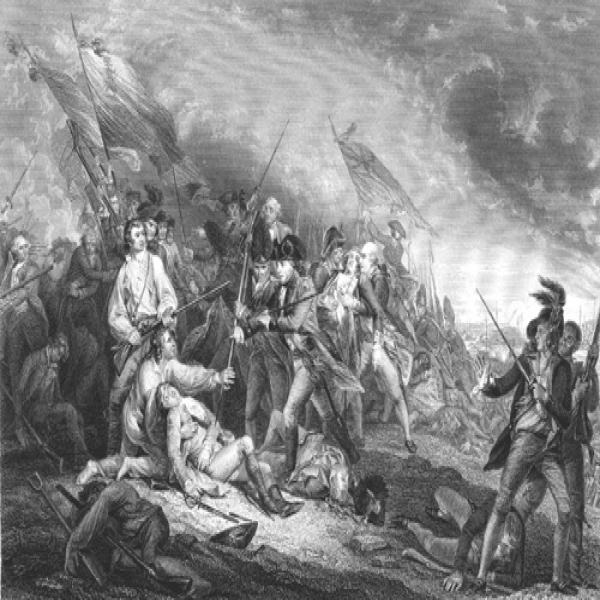The Battle at Bunker's Hill, near Boston, June 7th, 1775
Original

Background Notes

Battle of Bunker Hill
While the battles of Lexington and Concord were spontaneous outbursts of violence, the Battle of Bunker Hill was the first deliberate conflict of the American Revolution. It began when Connecticut and Massachusetts militia led by Major General Israel Putnam (1718-90) and Major William Prescott (1726-95), respectively, built an earthen fort on top of Breed's Hill during the night of June 16. The next day, June 17, 1775, the British awoke to find the heights overlooking the city to the north fortified with 1,600 colonial militia and six cannons. (1) These are depicted here on the upper and lower left of the image. The British soon began bombarding the fortifications with artillery from British batteries and warships in the harbor. When that failed to dislodge the Americans, they landed approximately two thousand soldiers under the command of General William Howe and later reinforced by General William Clinton. The British marched up the hill and were repulsed by the Americans twice. Finally, exhausted and without ammunition, the Americans retreated on the third assault. Although an American defeat, the battle was very costly for the British, who lost 1,054 men, including 94 officers. The American losses were 441 men. During the course of the battle, which lasted just over two hours, the abandoned community of Charlestown, was burned by British to rid it of American snipers. This is represented in the center of this image.
The conflict, first called the Battle of Charlestown Heights and then later, the Battle of Bunker Hill, was to prove important for a number of reasons: it further inspired the disparate Southern colonies into joining the resistance to British rule, it rallied colonial soldiers who now understood the British army was not invincible, and it gave the British military a greater respect for the "rabble in arms" that they had supposed the American forces to be. Although efforts at reconciliation would continue to be made, it was clear at the end of this hot, bloody day in June that the relationship between Britain and her American colonies would never be the same. (2)
1. Morris, Richard B. ed. Encyclopedia of American History, 7th ed.. (New York: HarperResource, 1996).
2. Fleming, Thomas J. Now We Are Enemies: The Story of Bunker Hill. (New York: St. Martin.s Press 1960).